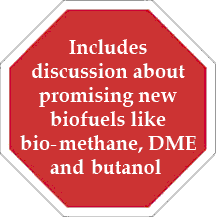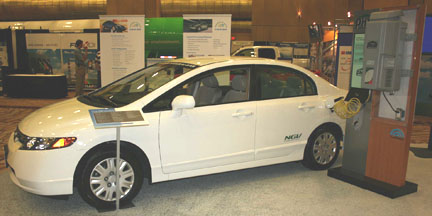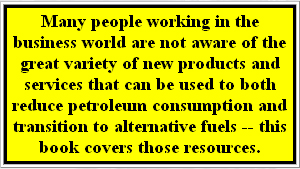Table Of Contents
Version 1 – Published in January 2008
 Chapter 1 – Introduction
Chapter 1 – Introduction
Chapter 2 – The Severity And Timing Of Peak Oil
Chapter 3 – Reasons To Immediately Transition Away From Gasoline & Petro-Diesel
Chapter 4 – Reasons Why So Little Has Been Done To Address This Problem
Chapter 5 – Ways To Conserve Gasoline & Petro-Diesel
Chapter 6 – Ways To Increase The Efficiency Of Gasoline & Petro-Diesel Vehicles
Chapter 7 – Ways To Replace Gasoline & Petro-Diesel Vehicles
Chapter 8 – Strategies For Managing The Transition Away From Gasoline & Petro-Diesel
Chapter 9 – Suggested Step-By-Step Action Plan
Chapter 10 – Statement Of The Author’s Independence
Chapter 11 – Annotated List Of References Consulted
Appendix 1 – Suggested Criteria For Evaluating New Energy Technologies
Appendix 2 – Suggested Criteria For Selecting Strategies To Transition Away From Gasoline & Petro-Diesel
Appendix 3 – Gallon Of Gasoline Equivalent Cost For Alternative Fuels
Appendix 4 – Net Energy Scores For Alternative Fuels
Appendix 5 – Alternative Fuels At A Glance
Appendix 6 – Navigation Guide To This Book
Appendix 7 – Exemplary Transition Scenarios
Appendix 8 – Executive Summary

2008 Honda Civic GX natural gas vehicle with in-home dispenser.
The appearance of a particular vehicle on this sitedoes not constitute an endorsement or recommendation.
Practical & Action Oriented:
This new report contains a wide variety of practical material including 30 specific reasons why an organization should immediately transition away from gasoline and petro-diesel. To help the reader navigate the corporate politics that go along with this hot topic, the report defines 36 psychological impediments to moving ahead with a transition, as well as providing suggestions on how to finesse each one of these. An extensive list of the pros and cons is provided for 17 specific methods to conserve petroleum fuels, 32 new technologies to significantly boost the efficiency of vehicles still using petroleum fuels, and 12 practical and now-available alternative transportation fuels. A wealth of management-oriented advice is bundled with the report, including 34 action steps to guide a successful transition effort, 30 suggested criteria for making business-related transition decisions, 95 criteria with which to evaluate alternative fuels, and 50 different management strategies to successfully navigate the transition. Web links and company names are also provided for well over 500 organizations that offer products and services that can expedite this transition.
 Extensively Researched & Referenced:
Extensively Researched & Referenced:
This innovative new book is over 750 pages long and is based on more than two years of in-depth research. The material is extensively cross-referenced so that the reader can quickly obtain more information on topics of interest. The report includes a list of over 1400 references on which the author relied when arriving at his practical suggestions for managing the transition to a post-petroleum business environment.
Many people working in the business world are not aware of the great variety of new products and services that can be used to both reduce petroleum consumption and transition to alternative fuels — this book covers those resources.
Narrowly Scoped To Give You Everything You Need:
This practical report covers just about everything a manager needs to know in order to successfully manage an internal effort to rapidly move away from both gasoline and petro-diesel. Although a successful response to both global warming and peak oil will undoubtedly require other initiatives, moving away from gasoline and petro-diesel will have a tremendous positive impact in multiple domains. The positive effects for a specific organization will show up in arenas such as enhanced marketing messages, more positive public relations, improved employee morale, easier new employee recruiting, more supportive customer relations, reduced probabilities of missed customer commitments, strengthened contingency planning, markedly reduced costs, greater cost predictability, better compliance with environmental laws and regulations, reduced hazardous waste, and improved competitive position. When you consider that 66% of the oil consumption of the United States, and 57% of the oil consumption of the world, is used in the transportation sector, you can appreciate that moving away from gasoline and petro-diesel will have a tremendously positive impact on both the global warming problem and the peak oil problem.
Applicable To Nearly Any Organization:
This essential report is intended for any manager concerned about his or her organization’s reliance on gasoline and petro-diesel. The action steps described in the book are relevant to commercial businesses, government agencies, as well as non-profit entities. Although of greatest benefit to middle-size and large organizations, this book can be successfully used by organizations of any size.





